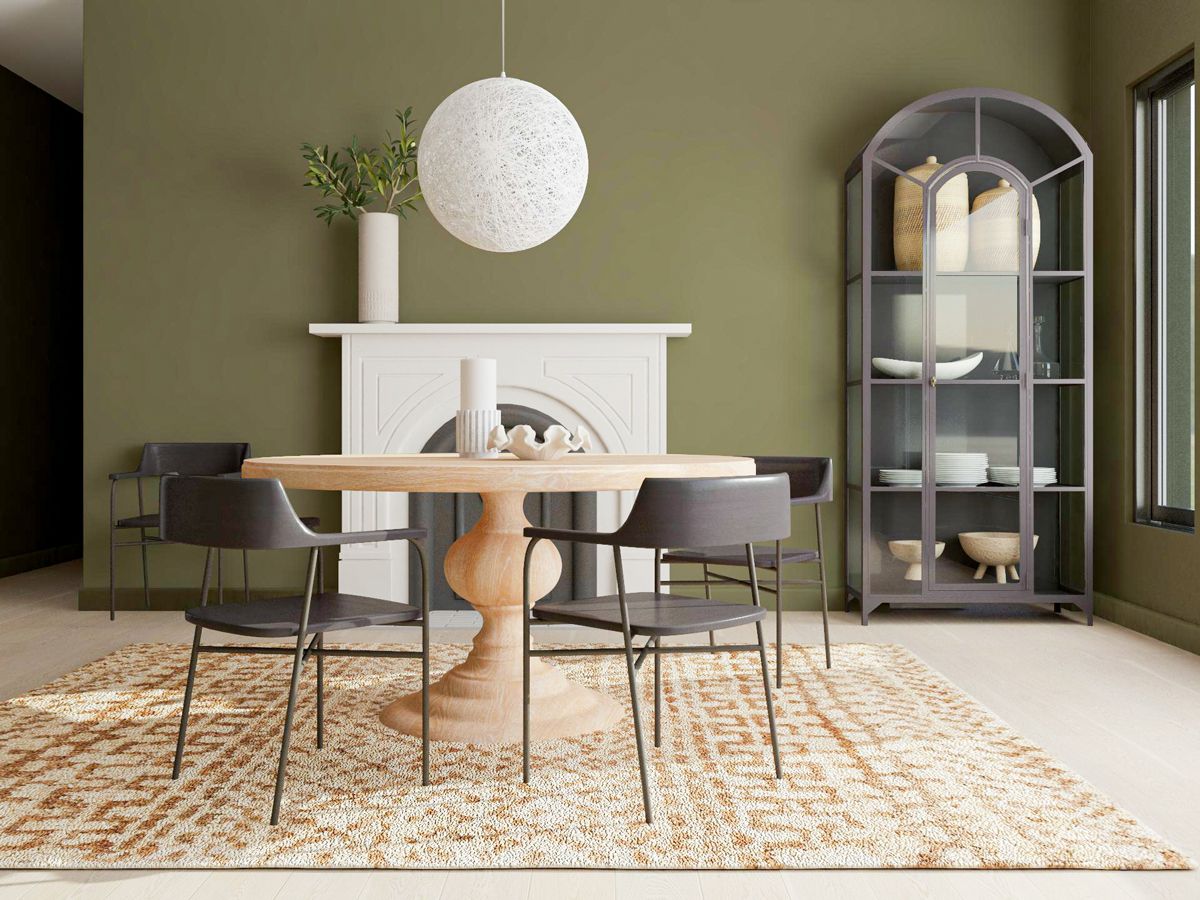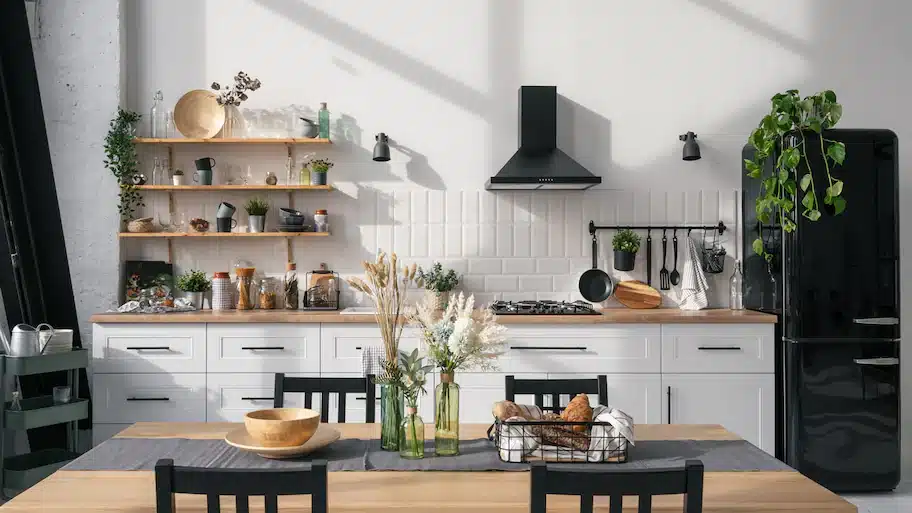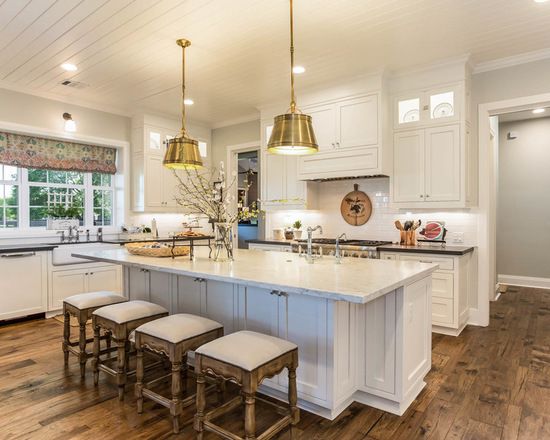How to Mix Traditional and Modern Elements in Kitchen Design?
The kitchen has traditionally been the center of the house, bringing together cherished memories and culinary magic. There are two major design directions to pick from when it comes to this important space: traditional or Modern.
But who is to say that you must pick only one? The best of both types may be captured in a unique setting by fusing classic and modern kitchen design features. We’ll look at how to skillfully combine these styles in this blog to make a traditional yet modern kitchen:
Knowing the Differences Between Traditional and Modern Kitchen Design
Before learning how to combine these two styles, let’s first take a quick look at what each style entails-
Traditional Kitchen Design

The hospitable atmosphere of a traditional kitchen design sets it apart. It frequently has elegant cabinets, rich wood finishes, exquisite craftsmanship, and traditional color schemes. Traditional Kitchens frequently have features like raised panel cabinet doors, ornamental corbels, and crown molding. This look gives off an air of coziness, recognizability, and nostalgia.
Modern Kitchen Design

On the opposite end of the scale is modern kitchen design, which is streamlined, minimalist, and utilitarian. It highlights a neutral color scheme, smooth surfaces, and clean lines. Materials such as stainless steel, glass, and stone are frequently used in modern kitchens. The design conveys a feeling of refinement and modern aesthetics since it is effective and clean.
Bringing Tradition and Modernity Together
1. Harmonious Colour Scheme

Start by choosing a color scheme that blends classic and contemporary design elements. Consider using white, grey, and cream as a basis, then add a splash of color that is influenced by your preferred conventional hues. Small appliances, backsplashes, or even ornamental tiles might do this.
2. Cabinetry with a Twist
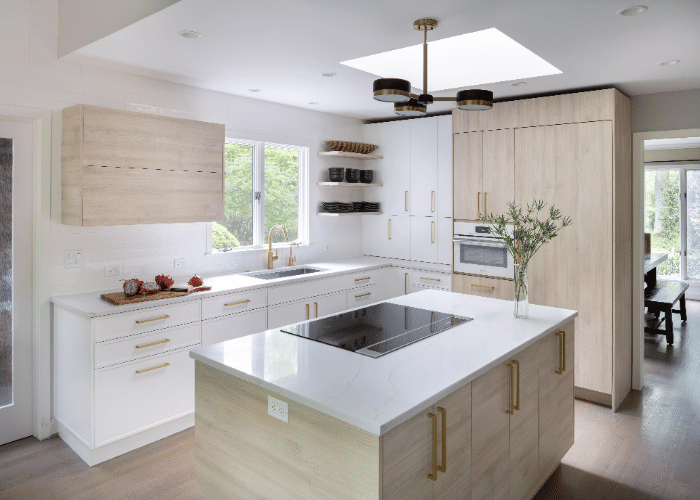
Combine contemporary hardware with the luxury of classic cabinet designs. Choose cabinets with straightforward, clean lines, but accentuate them with classic features like raised panels or glass front doors. Combining materials, such as glass and wood, may help achieve the ideal balance between classic coziness and contemporary sleekness.
3. Timeless Flooring
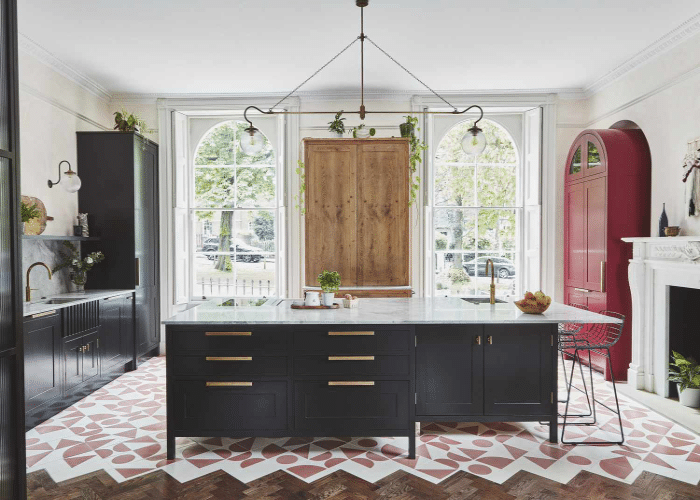
Opt for durable flooring materials like stone or hardwood. These materials offer a timeless base and are adaptable enough to work with both components of traditional and modern kitchen designs. You may also take into account patterned tiles that are based on traditional patterns.
4. Contrasts in Countertops

Choose countertops with a variety of textures and colors. When combined with stainless steel appliances, a polished marble or granite countertop with a variety of textures and colors. When combined with stainless steel appliances, a polished marble or granite countertop may lend a sense of heritage and elegance while providing a contemporary contrast.
5. Importance of Lighting

Lighting is a key component of any kitchen design. Combine sleek, contemporary fixtures with vintage chandeliers or pendant lights. To preserve a harmonious atmosphere, extravagant and simple lighting can be combined to provide an intriguing focal point.
6. Statement Pieces
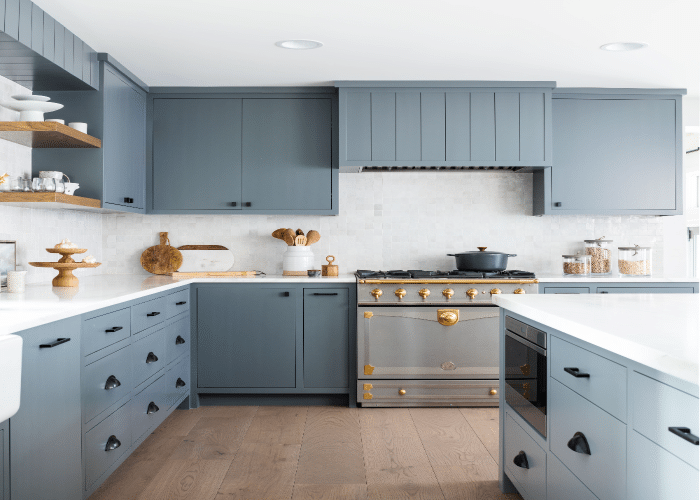
Include a focal point item that combines the two aesthetics, such as a kitchen island with a contemporary surface and historical design cues. This statement item may act as the room’s focal point and demonstrate your skill to combine traditional and modern kitchen design nimbly.
7. Curated Displays on Open Shelves

Think about using open shelves to display both contemporary and classic artifacts. Place a variety of contemporary dishes next to antique or historic cookware. This display not only gives the character but also expertly combines two design philosophies.
8. Details and Accents
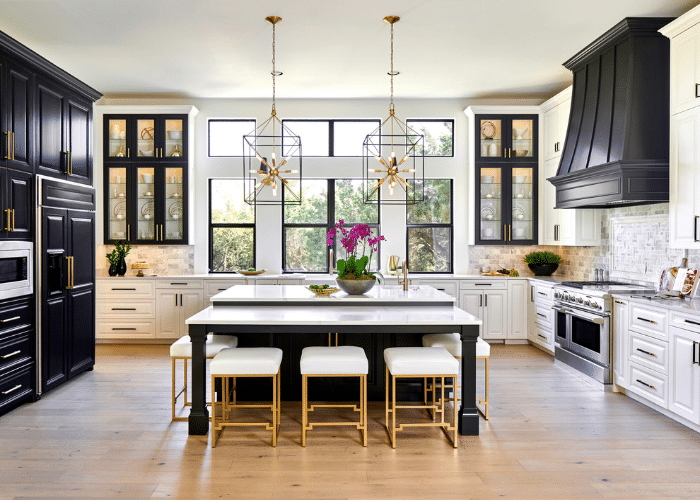
Often, the little things have the biggest effects. Add conventional finishing touches to contemporary surfaces, such as ornamental tiles, molding, or carved accents. On the other hand, add contemporary design components to historic settings, such as minimalist faucets or stainless steel hardware.
9. Textures and Fabrics
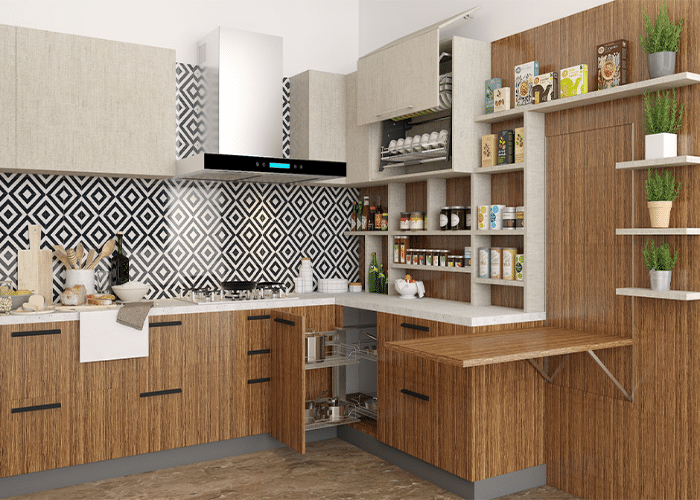
Play around with textures and materials to add warmth and comfort. With cushy cushions or upholstered chairs, soften the futuristic edges. To create a sense of integration, use fabrics with ancient designs in contemporary hues.
10. Personal Touches

Finally, add a little bit of you to the design. Put precious family recipes on display in contemporary frames or add sentimental items that celebrate your culture. By fusing tradition and modernity with your own story, this particular touch lends authenticity to your modern kitchen design.
Conclusion
The goal of combining traditional and modern kitchen design is to create a room that celebrates the best of both worlds rather than merely fusing the two styles. You may create a kitchen that reflects modern sensibilities while standing the test of time by making thoughtful choices about the materials, colors, and design components.
You may design a kitchen that is not only practical but also a real representation of your preferences, personality, and way of life by mastering the skill of merging various styles. So get started on this imaginative adventure and see how your kitchen transforms into an alluring fusion of heritage and innovation.


